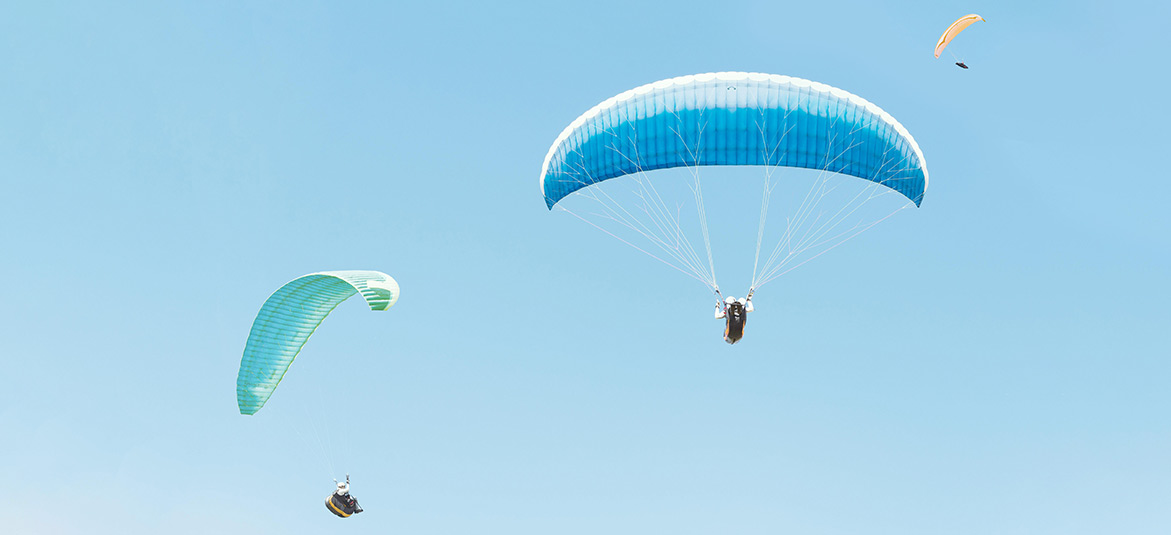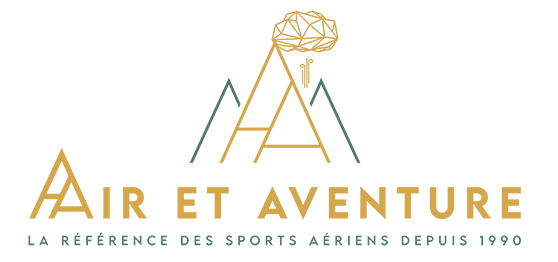Progressing in paragliding : how to improve in free flight ?


Paragliding progression generally follows a well-defined path that revolves around learning, initiation, improvement and regular practice. Let's take a look at the classic progression for any paraglider wanting to improve his or her free-flight skills.
WHAT ARE THE KEY STAGES IN PARAGLIDING PROGRESS ?
Progress in paragliding is a rewarding adventure that can be discovered and mastered through various course. Each stage marks a significant advance in the mastery of this aerial sport, and safety remains the watchword at every level. Let's take a look at a few key stages that represent the questions most frequently asked by beginner paragliders.
How long does it take to make your first solo paragliding flight ?
Generally speaking, the first totally solo flight with a paraglider takes place after 3 or 4 days of training in a paragliding school. The first two or three days are generally spent learning how to handle the paraglider on the ground, getting to grips with inflating the glider on school slopes, and as soon as your instructors think you're ready to take off, they'll take you on your first big flight. In practice, you're on your own under your paraglider, but you're guided by your instructors, via radio, from the start to the end of your flight. In short, the instructor gives you instructions, and you carry out the commands given to you.
When to make your first solo flights outside school
Flying solo for the first time is an exciting but delicate step. Before embarking on solo flying, it's imperative to have acquired a solid grounding in paragliding school, and a good knowledge of your equipment and aerodynamic principles. Generally speaking, a pilot is ready for this stage once he or she has successfully completed a certain number of supervised flights and obtained the endorsement of his or her instructors (generally after about ten days at the school, always if your instructor tells you that he or she feels you can do it). It's also a good idea to start out in good weather conditions at a well-known site, with an easy take-off and a large landing area, so that you can fly with complete peace of mind.
There's no set number of flights, as this will depend on a number of factors : your learning capacity, your personal confidence, how easy it is to get into the sport, etc. Generally speaking, paragliding schools advise you to do an initiation course and a progression course before starting to fly on your own. Even if you've already flown alone in a school on your 3rd or 4th day of training, that doesn't mean you're ready. The reason? Events that you are still unaware of at this stage of your progress, and which are managed by your instructors without you even realizing it (aerology, various obstacles, other paragliders around you, etc.). So be careful not to get ahead of yourself.

When should you start thermalling ?
Exploiting thermal lift is crucial to progress in paragliding, and is surely the most exciting and rewarding step! This skill enables you to gain altitude and extend the duration of your flights. It is generally acquired after an initiation phase and a few months of regular practice in calm conditions. We recommend that you approach thermal flying under the supervision of an experienced instructor, or as part of a dedicated course. Understanding meteorology is also an important prerequisite for effective thermalling.
When to take simulation of In-Flight Incidents course
The simulation of In-Flight Incidents course is an advanced course in a paraglider's progression. It aims to teach how to handle critical flight situations as safely as possible. Generally speaking, it is advisable to have solid flying experience and a good command of your equipment before enrolling in an SIV course. This course is often considered a must for any serious paraglider wanting to fly with as much safety margin as possible and gain in confidence. The timing for an SIV course varies from pilot to pilot, but an intermediate level with good experience in light thermals is often a good time to take an SIV course. Before that, you have plenty of other things to learn, and after that, and if you do it too late, you run the risk of getting into uncomfortable flying situations that can be fully mastered if you have the associated flying reflexes.
In short, progress in paragliding is punctuated by key stages that require serious preparation, proper training and a cautious approach. Each new stage must be well thought-out and supervised to ensure safe and efficient progress in the exciting world of free flight.
PARAGLIDING PROGRESSION COURSE WITH AIR ET AVENTURE
To continue progressing, it is advisable to take part in a progression course organized by a reputable school such as Air et Aventure. These courses enable pilots to acquire advanced skills, fly in different spots and understand the nuances of weather and aerological conditions. Accompaniment by seasoned professionals is a must for any paraglider on the move.
At Air et Aventure, the progression courses will give you advanced technical skills, and allow you to fly in different places to familiarize yourself with aerological analysis, and to discover different take-off and landing styles.
The advanced courses will take you step by step towards thermal exploitation, and make you fully equipped to fly alone in varied conditions on all types of FFVL-approved spots.

PROGRESS WITH A CERTIFIED EN B PARAGLIDER
Choosing the right equipment is crucial to progress in paragliding. Opting for an EN B glider is often recommended for intermediate pilots, as it offers a good balance between performance and safety. Familiarization with your glider and the associated equipment is essential for gaining confidence and proficiency in flight.
KEEP TRACK OF YOUR PROGRESS WITH A LOGBOOK
Keeping a logbook is an excellent way to track your progress. Noting each flight, weather conditions, achievements and areas for improvement not only helps you keep track of your progress, but also helps you identify areas for improvement. It also allows you to share your experiences with other paragliders and get valuable advice.
PROGRESS IN PARAGLIDING BY FLYING REGULARLY
Regular practice is the key to paragliding progress. Flying regularly, changing spots to discover different conditions and landscapes, are practices that enrich a pilot's experience. What's more, flying in different environments pushes you out of your comfort zone, and enables you to continue progressing not only in your flying skills, but above all in your analysis of the various environments you encounter.
Progress in paragliding is an exciting journey that requires time, patience and personal investment. Whether through paragliding courses, acquiring new equipment, keeping a logbook or regular practice, each stage brings its own share of discoveries and satisfactions. With the right guidance, practice and a willingness to learn, every pilot can achieve a high level of competence and enjoy the unique sensations of paragliding.
CONSULT OUR COMPLETE GUIDE TO PARAGLIDING PROGRESSION :
Paragliding, discover and progress : the complete guide to improving your paragliding skills
Paragliding distance flight : how to prepare ?
Cross paragliding : how to learn this type of flight ?
Paragliding Gliders to progress : what equipment should you choose ?
Price of a beginner paraglider : what is the average cost of equipment ?
Paragliding alone : how do you become autonomous in flight ?








